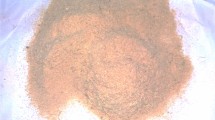Abstract
This paper focuses on a novel strengthening method for stone beams. An experimental study on the flexural behavior of six full scale stone beams, including three beams unstrengthened and three beams strengthened with a combination of angle steels and PET (polyethylene terephthalate plastic) belts, was performed. The failure modes, flexural capacity, deformability, and influence of different types and dimensions of stones, along with the different specifications of angle steels on the flexural behavior, were analyzed. The experimental results indicated that: unstrengthened greenish white marble beams exhibited a typical brittle failure mode, and unstrengthened white marble beams with better deformation properties exhibited a non-fully brittle failure mode; each of the strengthened stone beams exhibited a non-fully brittle failure mode. Furthermore, the flexural capacity and deformation capacity of the strengthened stone beams were improved to some extent. After the ultimate load, strengthened stone beams still had a certain flexural capacity, namely the flexural capacity margin, because of the action of angle steels. A theoretical analysis of the flexural capacity of stone beams was conducted, and a simplified calculation formula of the ultimate flexural capacity and flexural capacity margin was proposed.









Similar content being viewed by others
References
Bairrão R, Silva MJF (2009) Shaking table tests of two different reinforcement techniques using polymeric grids on an asymmetric limestone full-scaled structure. Eng Struct 3:1321–1330
Cao SW, Zhao D, Chen P (2010) Test research on stony beams strengthened by CFRP. J Build Struct 40(5):53–55
Dhanasekar M (2011) Shear in reinforced and unreinforced masonry: response, design and construction. Procedia Eng 14:2069–2076
Drosopoulos GA, Stavroulakis GE, Massalas CV (2007) FRP reinforcement of stone arch bridges: unilateral contact models and limit analysis. Compos Part B. 38:144–151
Esmaeeli E, Manning E, Barros JAO (2013) Strain hardening fibre reinforced cement composites for the flexural strengthening of masonry elements of ancient structures. Constr Build Mater 38:1010–1021
Exadaktylos GE, Vardoulakis I, Kourkoulis SK (2001) Influence of nonlinearity and double elasticity on flexure of rock beams-II. Characterization of Dionysos mable. Int J Solids Struct 38:4119–4145
Garmendia L, Marcos I, Garbin E et al (2014) Strengthening of masonry arches with textile-reinforced mortar: experimental behaviour and analytical approaches. Mater Struct. doi:10.1617/s11527-014-0339-y
GB 50010 (2010) Code for design of concrete structures
GB/T 50152 (2012) Standard for test method of concrete structures
Golabchi M, Khorramirouz M (2009) Assessment of structural components of Iranian heritage building: persepolis. Struct Stud Repairs Maint Herit Archit XI:161–172
Guo ZX, Chai ZL, Hu YD et al (2011) Experimental study on seismic behavior of stone masonry wall. J Build Struct 32(3):57–63
Guo ZX, Wang L, Chai ZL et al (2011) Experimental study on flexural behavior of stone slabs strengthened with ferrocement mortar. J Build Struct 32(3):69–74
JTG E41 (2005) Test methods of rock for highway engineering
Kong TT, Chen P, Zhao D (2009) Application study on outer covering arch method in Lu’ an stone arch bridge rehabilitation engineering. Constr Technol 38(2):72–73
Kourkoulis SK, Ganniari-Papageorgiou E, Mentzini M (2010) Dionysos marble beams under bending: a contribution towards understanding the fracture of the Parthenon architraves. Eng Geol 115:246–256
Kourkoulis S, Panagiotopoulou V, Ganniari-Papageorgiou E (2012) The role of the fracture plane’s inclination in the restoration of marble epistyles. J Cult Herit 13:426–436
Liu Y, Guo ZX, Liu BC et al (2011) Experimental study on flexural behavior of NSM CFRP-stone composite beams. J Build Struct 32(3):75–81
Mai SL, Lv Y (2004) Seismic analysis and strengthening of thousand-year old bridge. Technol Highw Transp 5:104–106
Meda A (2003) Tensile behaviour in natural building stone: Serena sandstone. Mater Struct 36:553–559
Shrive NG (2006) The use of fibre reinforced polymers to improve seismic resistance of masonry. Constr Build Mater 20(4):269–277
Tian PG, Chen P, Zhao D et al (2005) Strengthening and conservation of the Wuyang watchtower of the Han dynasty. Xi’an Univ Arch Tech (Natural Science Edition) 37(4):492–495
Toganidis N (2007) Parthenon restoration project. XXI International CIPA Symposium, pp 1–6
Török Á, Přikryl R (2010) Current methods and future trends in testing, durability analyses and provenance studies of natural stones used in historical monuments. Eng Geol 115:139–142
Turer A, Gölalmış M (2008) Scrap tire ring as a low-cost post-tensioning material for masonry strengthening. Mater Struct 41:1345–1361
Uranjek M, Bosiljkov V, Žarnić R et al (2012) In situ tests and seismic assessment of a stone-masonry building. Mater Struct 45:861–879
Valluzzi MR, Modena C (2004) Behavior and modeling of strengthened three-leaf stone masonry walls. Mater Struct 37:184–192
Wang LQ, Dang GC, Liang GZ (2004) Studies on efflorescence and consolidation of historic stones. Sci Conserv Archaeol 16(4):58–63
Zambas C (1994) Mechanical properties of pentelic marbles. Publications of the Committee for the Preservation of the Acropolis Monuments, Athens
Zhang N, Guo ZX (2012) The bending performance test for the granite floor slab. J Huaqiao Univ (Natural Science) 33(2):184–187
Zhang XH, Lin BG, Jiao HZ et al (2011) The bending test study of prestressed long-span stone beams. Xi’an Univ Arch Technol (Natural Science Edition) 43(2):172–177
Author information
Authors and Affiliations
Corresponding author
Rights and permissions
About this article
Cite this article
Xie, J., Wu, X. & Xu, F. Experimental study on the flexural behavior of stone beams strengthened with a combination of angle steels and PET belts. Mater Struct 49, 1013–1024 (2016). https://doi.org/10.1617/s11527-015-0555-0
Received:
Accepted:
Published:
Issue Date:
DOI: https://doi.org/10.1617/s11527-015-0555-0




